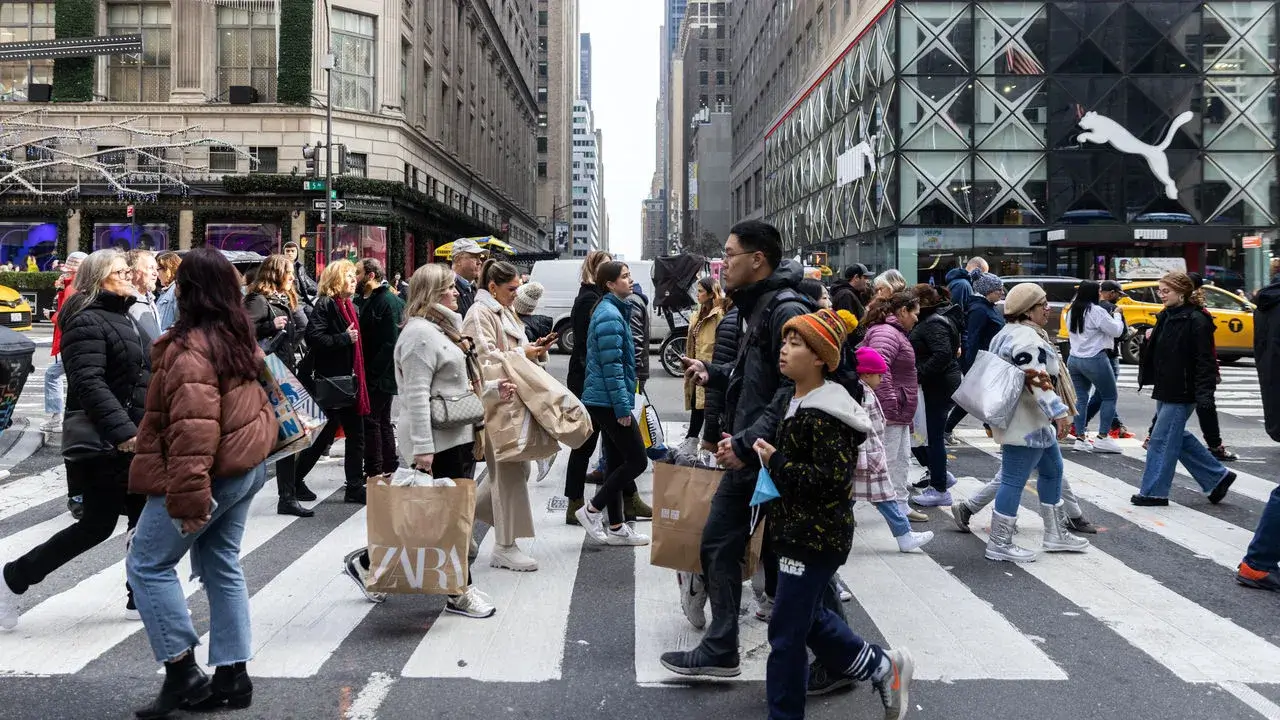Three economic risks facing America in 2024

The economy has dodged a recession, but not is out of the woods yet
America’s economy in 2023 provided a lesson in humility for forecasters. Before the year began, almost all predicted that it was heading for sluggish growth at best, and a recession at worst. The logic was simple: beating inflation was bound to be painful. Instead, America powered ahead at an annualised pace of roughly 2% growth, even as inflation receded.
This has persuaded many analysts to ditch their gloom. Their median forecast heading into 2024 is that America will avert a recession and get price pressures under control. This would qualify as a “soft landing” after the inflationary scare of recent years. But, given how wrong many were about 2023, it is worth asking if the same is possible about 2024. Three dangers stand out.
First, there is always a delay between when central banks raise interest rates and when the economy feels the effects. In 2023 consumers and companies had savings that limited their need for financing; in 2024 they will have thinner buffers, thus increasing their exposure to higher rates. Second, even though the Federal Reserve may have finished raising interest rates, real rates will become progressively more restrictive as inflation falls. Finally, cracks are showing. Unemployment, though still low, is ticking up. Once an economic slowdown gets under way, it risks feeding off itself.
Still, there ought to be one unambiguously positive factor for the economy in 2024: inflation will be less of a concern. It has already tumbled from a year-on-year pace of 7% in mid-2022 to about 3%. Some worry that the “last mile” of wrestling it down to the Fed’s target of 2% will be especially challenging, perhaps prompting the central bank to raise its inflation target. It will have an opportunity to do so at the end of 2024, when it launches a quinquennial review of its monetary-policy framework. But it is unlikely to be necessary.
A softening in housing rents is already filtering into inflation readings, a process that will continue into 2024. Weaker demand for goods will combine with fully healed supply chains, weighing on retail prices. Most crucial, loosening in the once ultra-tight jobs market will lead to slower wage gains. So by the end of 2024 inflation will be weaker, even if not down to the 2% target. Indeed, the twin facts of slower growth and quiescent inflation will pave the way for the Fed to start cutting rates again, possibly as soon as mid-2024.
The biggest question for the coming year is how these trends will play into the presidential election. President Joe Biden and the Democrats have been frustrated by the low marks that American voters have given him on economic policy. Fewer than four in ten adults approve of Mr Biden’s handling of the economy, despite a concerted push by his administration to highlight its achievements: avoiding a recession, keeping unemployment low and reining in inflation, as well as passing laws boosting investment in green energy, infrastructure and manufacturing.
But, fairly or not, this messaging has not worked. Many people cannot look past the initial surge in inflation which took place on Mr Biden’s watch. Prices are no longer rising quickly, but they are still nearly 20% higher than when he took office in January 2021. That is the steepest increase under any president since Jimmy Carter’s single term in the late 1970s—an ominous precedent.
All is not lost for Mr Biden. As long as inflation continues to recede, there may be enough time for voters’ perceptions to change. Scores for consumer sentiment, as measured by surveys, have risen since mid-2022, even if they remain low by historical standards. If the consensus is correct this time, and America does avoid a recession, Mr Biden will have a propitious economic backdrop heading into the election in November. But the downside risks to growth go against that scenario: the economy may end up being more of a hindrance than a help in his re-election bid. ■
Simon Rabinovitch, US economics editor, The Economist, Washington, DC









